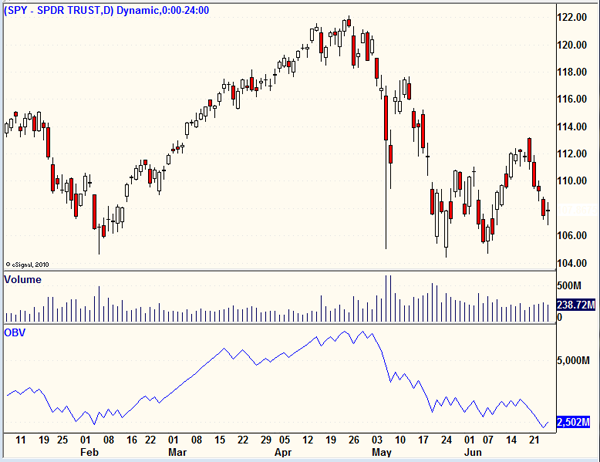ISO 9000 vs ISO 14000: Difference and Comparison

It contains requirements for achieving and maintaining environmentally sound standards of doing business. The entire business process is considered, from product manufacturing to product performance and, ultimately, product disposal. The organization’s interests include quality management, environmental impact management, health and safety, energy management, food safety, and information technology security. By providing your personal information e.g. name, postal/email address, telephone number enables Smithers to provide you with tailored information on our services. These might include purchased products such as market reports and conference places, testing or consulting services as well as digital resources such as whitepapers, webinar and brochures.

The International Organization of Standardization (ISO) is a worldwide federation consisting of member bodies from 91 countries, which promotes the development of international manufacturing, trade and communication standards. The need of the customers and stakeholders are kept in mind, and performances are maintained. Quality and customers are given priority in this section of the standards. They maintain quality and services with proper rules and regulations.
ISO 9000 determines the quality policy objectives and is a quality management system. ISO series of international standards accepted and maintained for environmental purposes. They guide the System, techniques, and principles to keep environmental surroundings healthy. The fourth option, certification, is another independent third-party process, which has been widely implemented by all types of organizations. Service providers of certification or registration are accredited by the International Accreditation Forum or national accreditation services such as UKAS in the UK.
Basic principles and methodology
Overall, the CI concept expects the organization to gradually move away from merely operational environmental measures towards a more strategic approach on how to deal with environmental challenges. Some companies prefer to use suppliers that are ISO 14000–certified suppliers. Smithers will retain personal information collected from you where we have an ongoing legitimate business need to do so. Smithers will only retain your personal information for as long as necessary to fulfil the purposes for which we collected it and in accordance with the time periods found in our Data Retention Policy. Smithers follow strict procedures to ensure your personal and financial information remain secure.
- Accreditation with ISO is voluntary, but it’s a mandatory step to demonstrate an organization’s commitment to smart environmental stewardship, reduction of environmental impacts and compliance with the global standards.
- Most importantly, more contractors are working with ISO certified customers every year as the certifications are more widely used and accepted in the United States.
- A Smithers member company may on occasion transfer your personal information to another Smithers member company, in some cases outside the European Economic Area.
- ISO standard has many benefits, the reason why companies should consider adopting it as one of their strategic approaches to improving their environmental performance.
- This is not an acceptable reference under ISO terms and definitions, as it can lead to confusion in the market.[14] The user is responsible for making their own determination.
Talk to a quality expert today to discover how we can help you achieve your quality and compliance goals with Intellect software. Now that you’ve learned about the differences between ISO 9001 and ISO 14001, learn about the benefits of ISO 14001. The certification process is by Preliminary assessment, Document review, Initial assessment, main assessment, certification, and surveillance. ISO was established to keep the environment of work safe and hygienic published by the International Organization for Standardization.
Conjoint Analysis
ISO is a series of environmental management standards developed and published by the International Organization for Standardization (ISO). The ISO standards provide guidelines and frameworks for organizations that need to systematize and improve their environmental management efforts. In order to become ISO 9000 certified, an organization must choose the appropriate ISO 9000 standard that fits its scope and activities; the most popular being ISO 9001.
Risk-Based Thinking and ISO 9001:2015 – Quality Digest
Risk-Based Thinking and ISO 9001:2015.
Posted: Fri, 21 Aug 2015 07:00:00 GMT [source]
ISO 9000 is a set of standards for quality management systems that help organizations meet customer and regulatory requirements. ISO is a similar set of standards for environmental management systems that help organizations minimize their environmental impact. Both standards are developed and updated by the International Organization for Standardization (ISO).
Minimum quality assurance is given by ISO 9000 but doesn’t take whole assurance for the certified organizations. The ISO and series of standards aren’t designed to aid the enforcement of environmental regulations or policies. However, compliance is desirable for several reasons, including considerations such as business success, stakeholder approval, competitive standing and reputational effects. Both costs and benefits will vary widely depending on the nature of the organization that is adopting the standards. An oil-drilling company, for example, may find the standards more onerous than a retail operation. Yet both have environmental issues to contend with, whether they concern the sourcing of their products, the maintenance of their facilities, or the disposal of their waste products.
Evolution of ISO 9000
ISO 9000 can bring many advantages to organizations that implement and adhere to its standards. These include improved customer satisfaction and loyalty, as the products and services meet their requirements and expectations, as well as increased competitiveness and market share. Additionally, ISO 9000 can lead to lower costs and waste due to optimized processes, preventing and correcting errors and defects. Furthermore, it can enhance the organization’s reputation and credibility, as they conform to internationally recognized standards and best practices. Finally, it facilitates trade and cooperation between organizations that use the same standards. It does not state requirements for environmental performance but rather maps out a framework that a company or organization can follow to set up an effective EMS.

When an organization is compliant with ISO 14001, it can either register with a third-party registrar or self-declare its compliance. The ISO standard is the only ISO standard that allows an organization to register to show it’s compliant. ISO certification can be achieved by having an accredited auditor verify that all the requirements are met. More than 400,000 organizations around the world have obtained ISO certification. At any point while we are in possession of or processing your personal data you can exercise all of the rights available to you under the governing data protection law.
It can be used by any organization that wants to improve resource efficiency, reduce waste, and reduce costs. ISO 9000 is a set of international standards on quality management and quality assurance developed to help companies effectively document the quality system elements to be implemented to maintain an efficient quality system. They are not specific to any one industry and can be applied to organizations of any size.
Why we need your personal data?
They all have different areas covered for environmental health improvement. The difference between ISO 9000 and ISO is that ISO 9000 helps in the production of quality products and is a Quality Management system. ISO 1400 also uses the Annex SL structure, but there are differences in the focus of the management system. International Organization for Standardization established and published this set of rules and standards.
Smithers will endeavor to keep your information accurate and up-to-date, retaining it only for as long as required. A company’s adoption of ISO standards does not guarantee that it meets all local environmental regulations. Environmental Protection Agency participated in the development of these international guidelines. ISO is similar to ISO 9000 quality management in that both pertain to the process of how a product is produced, rather than to the product itself. It provides the requirements for an environmental management system (EMS). The core of the ISO standards is contained in ISO 14001, which lays out the guidelines for putting an environmental management system (EMS) in place.
GGSIPU (MS Legal Aspects of Business
While both standards share clauses from the ISO’s HLS (High-Level Structure), there is a difference between how the clauses are implemented. ISO is an international standard that specifies the requirements for an Environment Management System (EMS). The international standard is intended for use by an organization to enhance its environmental performance and manage its environmental responsibilities in a systematic manner.
It may also help companies meet environmental regulations that are imposed by governments in which they do business. Safety Culture, a software company that specializes in improving workplace safety & risk management, suggests companies conduct an internal audit to evaluate their compliance before undergoing the formal accreditation process. ISO 9001 helps organizations improve quality and efficiency, while ISO helps minimize environmental impact. ISO – ISO 14024, ISO 14004, ISO – ISO 14015, etc., are some of the standards.
- Safety Culture, a software company that specializes in improving workplace safety & risk management, suggests companies conduct an internal audit to evaluate their compliance before undergoing the formal accreditation process.
- Both costs and benefits will vary widely depending on the nature of the organization that is adopting the standards.
- Proper improvement and consistency are attained with the help of ISO 9000.
- This includes understanding the impact of the raw materials used to create the product as well as the impact of its eventual disposal.
- ISO 9000 determines the quality policy objectives and is a quality management system.
The organization describes ISO 9000 as a family of standards for quality management systems. It can be seen as an overall guide to ethical management and leadership. A separate set of standards, called ISO 9000 and introduced in 1987, focuses on the best management practices for quality assurance. Both series of standards were published by ISO, the International Organization for Standardization.
Findings – The diffusion throughout the years of the number of IMSs follows an S- shaped behaviour. The evolution of the amount of IMSs in countries with a lower saturation level are better fitted by the Gompertz model while the Logistic model fits better when considering countries with a larger saturation level. Research limitations/implications – For some of the analysed countries, the data related to early years are not available. In order to perform the analysis using both the Gompertz and the Logistic models, missing data have been extrapolated from the dataset provided by the annual ISO survey.
Practical implications – The obtained results provide a cross-section of the diffusion of IMSs certifications in the South European countries and enable a forecast for the trend in the next years. Originality/value – This study aims, for the first time as we were able to find out, at the analysis of the diffusion of IMSs throughout the years. ISO is meant to be a step-by-step guide for establishing and then achieving environmentally-friendly objectives for business practices and products. The purpose is to help companies manage processes efficiently while minimizing environmental effects. On the other hand, ISO focuses on how well an entity can manage its environment. The ISO is based on continual improvement, whereby an organization will need to implement and improve environmental conservation processes and monitor them continually.
How to Design and Build a Data Center – TechTarget
How to Design and Build a Data Center.
Posted: Wed, 18 May 2022 07:00:00 GMT [source]
Any organization, whether in the public or private sectors, can use ISO to establish a program to meet its environmental responsibilities. The benefits of ISO compliance include establishing an ongoing capability difference between iso 9000 and iso 14000 to ensure compliance with environmental objectives. Obtaining ISO certification can be considered a sign of a commitment to the environment, which can be used as a marketing tool for companies.




Leave a Reply